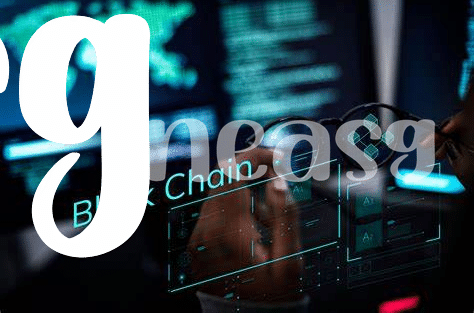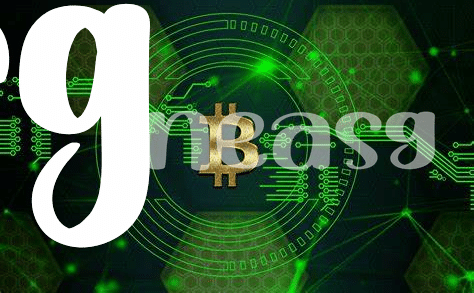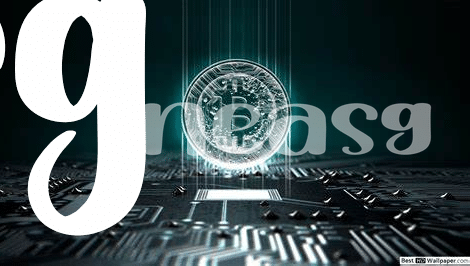What Is Blockchain, Really? 🤔

Imagine a world where every time you send a message to your friend, it’s passed through a room of trusted people, each verifying that the message is true and safe before it reaches its destination. That, in a nutshell, is what blockchain is like. It’s a revolutionary way of storing and sharing information across a computer network in a manner that is secure, transparent, and incredibly difficult to tamper with. Each piece of information, or “block,” is linked with the previous one to form a chain, creating a historically unchangeable record. This isn’t just for digital currencies like Bitcoin; it’s a concept that’s starting to spread its wings across other sectors, including cybersecurity. It thrives on the principle of decentralization, meaning that instead of having a single point of control, the management and verification of any transaction are spread across multiple points. This reduces the risk of hacking, as there’s not just one lock for cybercriminals to pick. Here’s a simple breakdown:
| Feature | Description |
|---|---|
| Decentralization | Distribution of control across multiple locations to prevent single points of failure. |
| Transparency | Each transaction is visible to participants, enhancing trust and verification. |
| Security | Information is encrypted and linked to the previous transaction, making unauthorized changes incredibly difficult. |
| Immutability | Once a transaction is recorded, it cannot be altered, ensuring integrity of the data. |
This blockchain technology embodies not just a shift in how we approach cybersecurity but also a potential leap towards a more secure digital future where trust and transparency are not at odds with one another.
How Blockchain Strengthens Cyber Defense 🛡️
Imagine a world where our online safety is guarded by an unbreakable shield, something that sounds like it’s straight out of a sci-fi movie. Well, this isn’t just fantasy; it’s the potential reality offered by blockchain technology. At its heart, blockchain is like a digital ledger that’s shared among a network of computers. This ledger keeps records of transactions in such a way that makes it extremely difficult for anyone to tamper with. So, when we talk about using it for cyber defense, think of it as creating an almost impenetrable wall around our digital information. Every piece of data or transaction is verified by multiple participants in the network, making fraudulent activities easy to spot and hard to execute. What’s more, the decentralized nature of blockchain means there’s no single point of failure, so attacks like Distributed Denial of Service (DDoS) become far less effective. Yet, the integration of blockchain into our cybersecurity toolkit isn’t without its hurdles. For more insights on how blockchain is revolutionizing secure online transactions, check out this informative piece: https://wikicrypto.news/how-blockchain-revolutionizes-secure-online-transactions. Here, we dive deeper into the vast ocean of blockchain’s capabilities, illustrating not just its strengths but also how it’s continually reshaping the way we protect our digital world.
Challenges of Integrating Blockchain in Security ⚙️

Integrating the powerful tech of blockchain into our cybersecurity efforts isn’t a walk in the park. First off, it’s pretty complex. Imagine trying to put together a 1000-piece puzzle where each piece represents a part of secure digital interaction. That’s a bit what it feels like. Secondly, there’s the cost. Setting up blockchain systems can require a lot of dough, kind of like the initial price of a really fancy security system for your home, but we’re talking about protecting digital spaces. Also, not everyone’s on board yet – it’s like trying to get everyone in your neighborhood to agree on the best way to keep the community safe. Some folks might worry about privacy issues, fearing it’s a bit too much like having someone peek into their backyard. Lastly, it needs a lot of energy to work. Running these systems can be like having all the lights in your house on 24/7. We need to think about how to power this securely without breaking the bank or hurting our planet.
Real-life Success Stories of Blockchain Defense 🌟

In the world of digital defense, several organizations and companies have turned the tables against cyber threats by embracing the innovative technology of blockchain. For example, Estonia, a country known for its digital advances, has deployed blockchain technology to secure its digital infrastructure, safeguarding government data, health records, and even the integrity of its e-voting systems. This forward-thinking approach has set a precedent, demonstrating blockchain’s ability to offer robust protection against cyber attacks. Meanwhile, in the corporate sector, companies like IBM are leveraging blockchain to enhance transparency and security in supply chain management, proving that this technology is not just a theoretical concept but a practical tool for cyber defense. Moreover, the emergence of bitcoin and corporate adoption and the blockchain points to a broader trend of integrating blockchain to secure transactions and systems across various industries. These real-life applications highlight blockchain’s versatility and reliability as a safeguard against cyber vulnerabilities, offering a glimpse into a future where digital security is no longer a constant battle but a guaranteed victory.
Potential Downsides and How to Overcome Them ⚠️
While blockchain technology offers a strong shield against cyber threats, it’s not without its hiccups. Think of it like a superhero; even Superman has his kryptonite. One major worry is the heavy demand on computing power and energy needed to keep the blockchain running smoothly. This can be pretty taxing, especially for smaller operations. Then there’s the learning curve; not everyone speaks “blockchain” fluently yet, making it harder to adopt widely. Despite these hurdles, there’s light at the end of the tunnel. By leaning on advancements in green tech, we can reduce blockchain’s appetite for energy, making it more sustainable. Also, education and training programs can turn blockchain lingo into everyday language. What’s more, organizations can pool resources, forming alliances to share the load of computational demands. This way, the path becomes clearer for blockchain to truly fortify our digital defenses.
Here’s a quick glance at some of the challenges and solutions:
| Challenge | Solution |
|---|---|
| High energy and computing demand | Invest in green technologies and develop more efficient blockchain systems |
| Complexity and learning curve | Implement education and training programs to increase blockchain literacy |
| Resource allocation for small entities | Encourage collaboration and resource sharing among organizations |
The Future of Blockchain and Cybersecurity 🚀

Imagine a world where our online safety is as seamless as sending a text message. That’s the direction we’re headed with blockchain technology in cybersecurity. It promises a future where digital identities are ironclad, and data breaches are as rare as finding a four-leaf clover. Already, we’re seeing blockchain lay the foundation for a security revolution. It brings to the table an unshakable way of storing and sharing information that, when fully harnessed, could make cyber attacks a thing of the past. Like a superhero team-up, blockchain is gearing up to tackle the biggest online threats, making our digital lives safer and more secure.
However, climbing this mountain of digital defense won’t be without its challenges. As we integrate blockchain into our cyber defenses, we’re bound to encounter a few bumps along the way. From scalability hurdles to the need for widespread adoption, the path is strewn with obstacles. Yet, the industry is buzzing with excitement and innovation, ready to tackle these challenges head-on. Real-life success stories are already showing us the bright potential of this synergy. To dive deeper into how this technology is reshaping our online world, explore bitcoin in popular culture and the blockchain. As we look to the horizon, one thing is clear: the convergence between blockchain and cybersecurity isn’t just a fleeting trend—it’s the dawn of a new era in digital defense. 🌐🔒🚀
